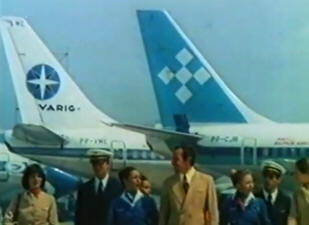|
|
20s | 30s | 40s | 50s | 60s | 70s | 80s | 90s | 2000s |
 |
|
|
||||||||||

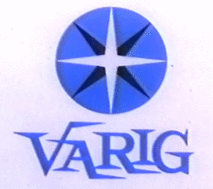
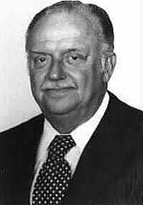
In April 1980 Hélio Smidt becomes
the new VARIG’s president, which under his command, expanded even
more its domestic and international network, but focusing in
Brazil’s interior cities. Hélio Smidt also assured fleet
modernization with Boeing 737, 747 and 767. He led the
company into an extremely dynamic philosophy and gave much value to
man and teamwork. VARIG lost some of its brightness when Helio Smidt
gone, in April 1990.
On February 12, 1981 VARIG acquired its first Jumbo jet. The three
Boeing 747-200 initially operated on Rio de Janeiro - New York
route and was an immediate hit among passengers. So years later, in
1985, VARIG acquired two more units, this time Boeing 747-300.
Another new
feature was the Airbus A300, initially received by Cruzeiro, in
1981. The Airbus increased comfort on the domestic routes to a new
level, offering wide seats, two aisles, eight bathrooms, individual
music channels and two classes of service, everything unheard of on
national routes until then.
In 1987 VARIG received the new generation wide-body jet Boeing 767-200ER. VARIG was the first airline in the world to operate B767
equipped with General Electric engines. The following year,
fleet modernization arrived on domestic routes, with the first
Boeing 737-300. They became the main aircraft for short and medium
range flights, including the replacement of Electra II in
Rio de Janeiro - São Paulo route.
In the 1980s VARIG continued to expand its extensive international network reaching Mozambique, Ivory Coast, Canada, Ecuador, Costa Rica and Panama. With the new destinations, the company reached its record, 42 foreign cities in 33 countries in its international network. In 1984, VARIG inaugurated its Catering Center in Rio de Janeiro, the largest, most complete and most sophisticated in the Americas.
On June 1st, 1988, VARIG's international network underwent a major change. With the inauguration of Guarulhos International Airport in Sao Paulo, it was a matter of time for most flights be transferred from Rio de Janeiro to Sao Paulo, which had long been the largest city in Brazil and the largest traffic generator. From that day, VARIG started its HUB in São Paulo, with the start of non-stop flights between Sao Paulo and Amsterdam, Frankfurt, London, Paris and Zurich. These flights were "triangular flight", where they also used Galeão airport in Rio de Janeiro (VARIG's main HUB yet). For example, Sao Paulo - Rio de Janeiro - Paris - São Paulo - Rio de Janeiro.
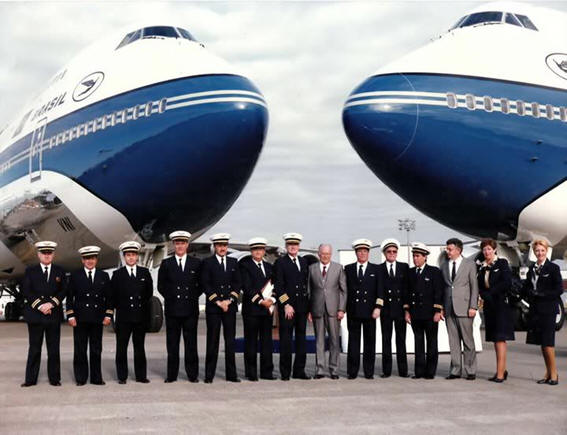
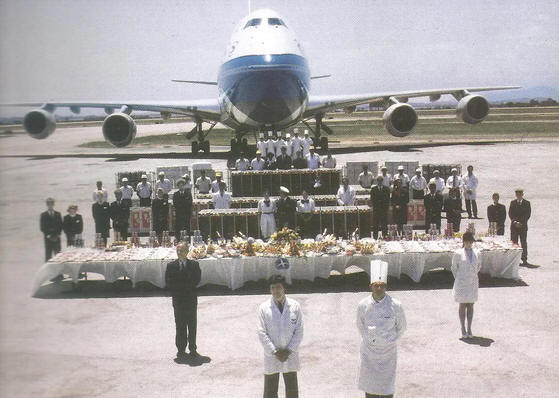
Ceremony for the two first Boeing 747
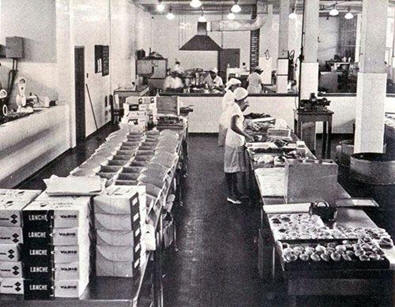
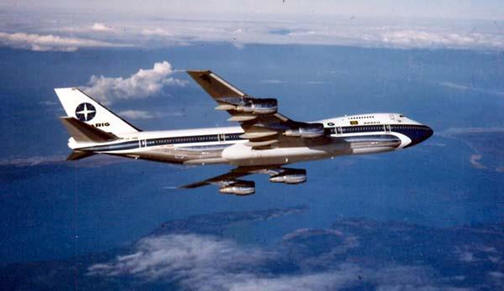
VARIG's Cartering / Boeing 747-200
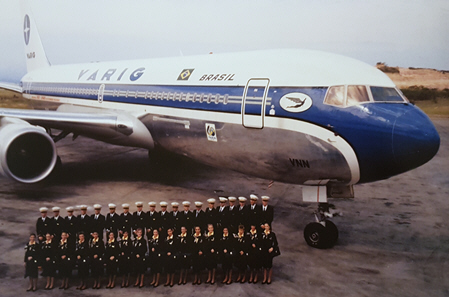
First Boeing
767-200 (Museu VARIG)
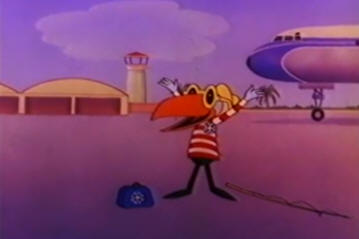
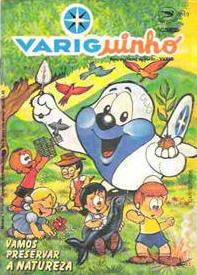
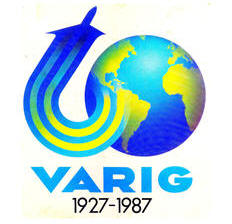

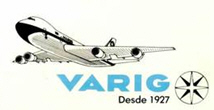
 |
|
HOW WAS FLYING IN THE 1980s?
The
glamor of the 60s and 70s began to lose some brightness
with the "low cost, low fare" airlines. The economy
class was the one that lost more services, but it still
had abundant hot food and drinks such wine and whiskey.
However, the glamor in First Class still intact. Also in
the 80s, the Executive Class become something common in
international flights.
On September 1st, 1982, the first VARIG's flight with Executive Class took off. The flight RG810, from Rio de Janeiro to Miami, operated with DC-10 launched a new class service between Economy Class and First Class, following the world trend. The new class offered more spacious seats and with greater reclination. The Business Class was designed for business travelers with more privacy, comfort and sophisticated on-board service than the Economy Class, but without the excessive luxury of First Class. Over time and with Business Class consolidation, Economy Class become more "economical", with simpler service and cheaper fares. The threat of low cost, low fare airlines in the USA and Europe has forced traditional airlines to reinvent themselves and become more competitive, being able to offer cheaper tickets to keep alive. In the 1980s, the number of seats in First Class declined, giving way to Business Class, but the glamor remained the same. Long-haul flights turned into a five-star restaurant in the meal time. It started with drinks, accompanied by hot and cold canapés, followed by Beluga caviar, Strasbourg Foie Gras, Melon with Parma ham and gratin onion soup. Then came entree, salads, main course and desserts, including items such as full Gaucho barbecue and French cheeses.
|
|
80s |
||
|
Fleet evolution (VARIG Group):
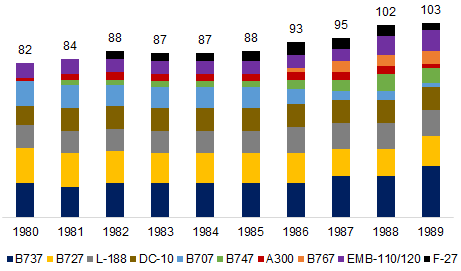
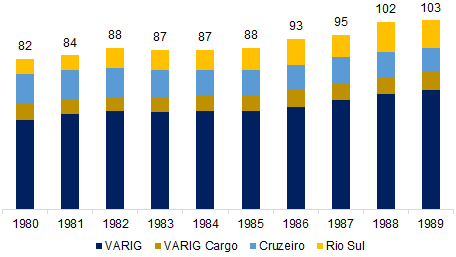
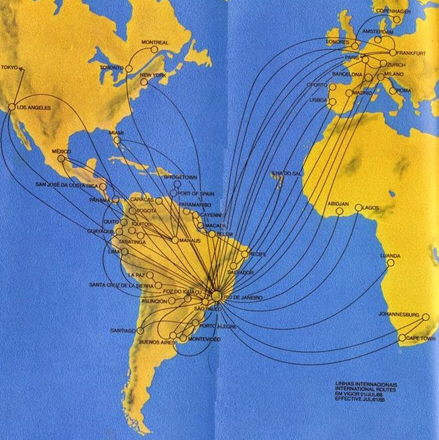
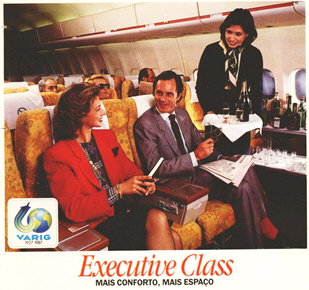
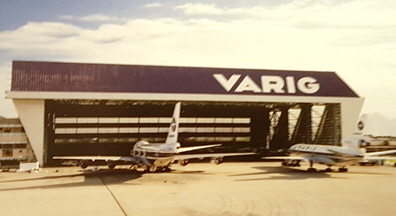
VARIG's internacional route map in 1988 / Business Class / Hangar
in Rio de Janeiro
 |
|
FOCUS: Varig and Cruzeiro flying together
In 1975 Varig bought Cruzeiro and started to dominate
100% of international market. Thenceforth VARIG and
Cruzeiro flew together until 90s, when Cruzeiro brand
finally disappeared. But these two airlines shared many
more things, even before the purchase. |







